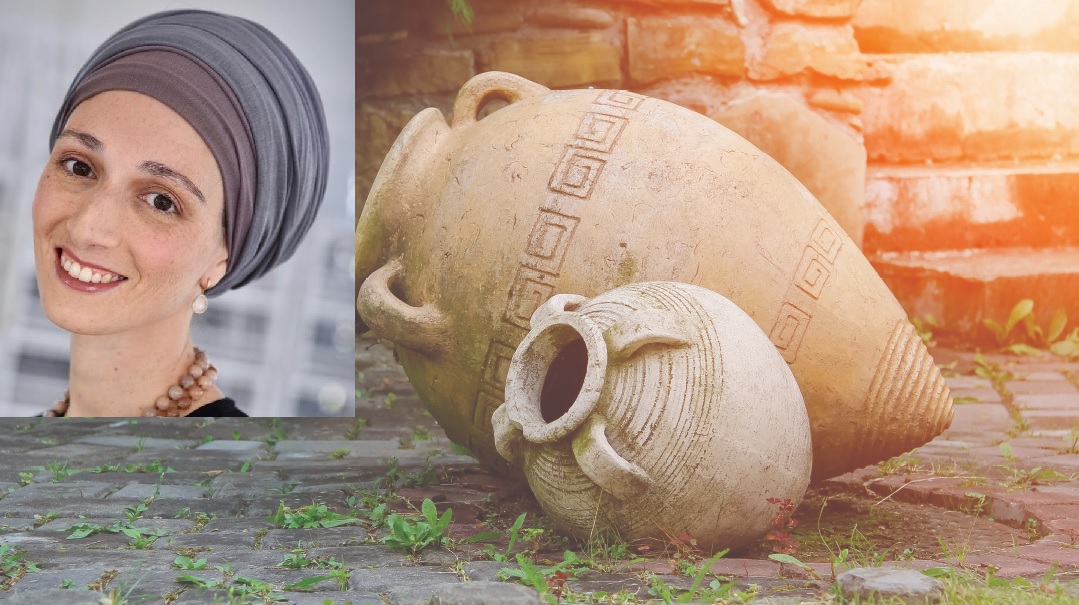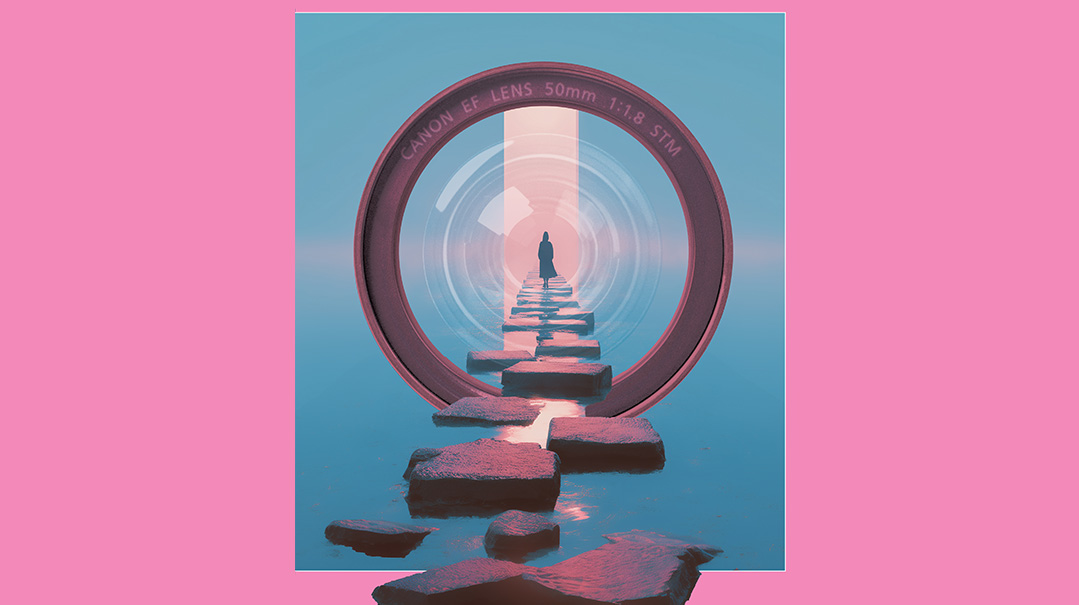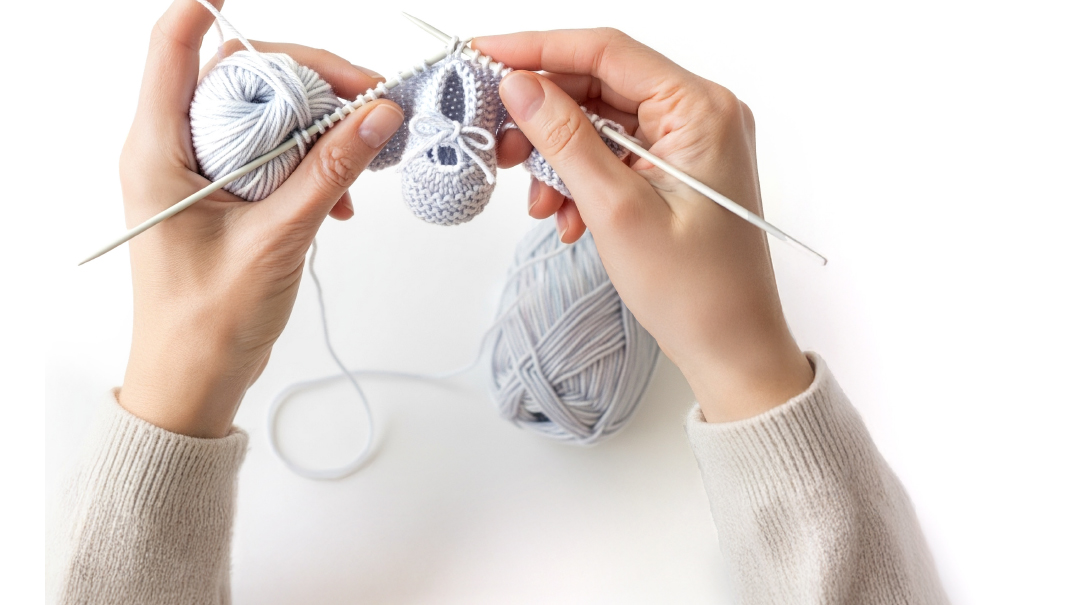Vessels of Light

Tamar Taback illuminates a new path to Jewish femininity

Imet Tamar for the first time in my kitchen, as I tried to figure out how I could warm up her gluten-free muffins in my very pizza-crusted toaster oven. Our conversation was engaging and all over the place. Soon, Tamar shared her dream: to create a community of women who would engage and together grow into our feminine fullness.
I’m of Galician origin. Which means I’ve got a snickering cynic within me. I thought Tamar was well-meaning and cute, but probably a bit delusional — what is she thinking? who does she think she is? — and I’m a person whose ambition exhausts those around me.
Tamar’s very feminine and gentle demeanor threw me off. And really, what could a chassidishe veibel, third-generation Boro Parker, have in common with a third-generation South African of pristine litvish origin?
Though I followed her as she developed her material, teachings, and network, I didn’t know how intellectually profound and all-encompassing her material was until around two years later, when I listened to her shiur “The Evolution of the Feminine as Seen Through Megillas Esther.” It was then that I was finally convinced: Tamar was unlocking an entirely new and breathtaking dimension on the topic of the Torah’s position for women in a post-feminism world.
The journey of exploring the development of the feminine, as well as women’s unique connection to Torah, is being charted by many women and some men as well. Devorah Fastag, followed by Miriam Kosman, were key figures in clearing a path with their groundbreaking books, The Moon’s Lost Light and Circle, Arrow, Spiral, Understanding Gender in Judaism, respectively. Building upon their works, and including many other sources, primary among them Sarah Yehudit Schneider, Tamar Taback is shedding a new light in her sincere and gentle way.
Discovering the Feminine
Born on Purim in South Africa, Tamar’s family soon moved to St. Louis, where she grew up. When she was 14, her parents, both baalei teshuvah, took a brief sabbatical in Israel. When her parents returned to America, Tamar stayed in the home of Rabbi Akiva Tatz — who’d been in medical school together with her father — to finish the school year in Israel, after which she returned to Bais Yaakov St. Louis.
She later attended BJJ seminary in Eretz Yisrael, and lived there a few years after her marriage to Ari Taback. Then the couple moved to South Africa, where Rabbi Taback took a position in rabbanus and Tamar taught in high schools and seminaries. During this period, she was learning and translating Ohel Rachel, a sefer describing the traditional feminine role, written by Rav Refael Menachem Schlanger, a student of Rav Moshe Shapira ztz”l.
As she studied, though, she was troubled by an issue that had bothered her since she was a teenager — although then she’d had a hard time articulating it. “If it’s good if a woman loves Torah and wants to learn it,” Tamar asked, “Why, then, are there so many descriptions that seemed to assume that women aren’t personally studying Torah?”
As Tamar continued to learn, she began to notice a pattern: The entire world is composed of masculine and feminine — Heaven and Earth, mitzvos aseh and mitzvos lo saaseh, Kudsha Berich Hu and Shechinah (Hashem’s transcendent Essence and His imminent Presence).
“I had learned so much about femininity, I was determined to get it right, to be the perfect akeres habayis, the woman whose ruchniyus was only what she was mekabel from her husband, who thrived in the traditional role,” Tamar shares. “But doing so strained me emotionally and left me feeling depressed. For example, the mashpia-mekabel model [in which the male is the giver and the woman the receiver] doesn’t mean that a woman should receive her happiness solely from her husband — this misapplication leads to enmeshment and worse.”
As Tamar continued to learn, she discovered the higher feminine archetype. “I realized that a woman cannot expect to get her spiritual needs met by only her husband but if motivated, needs to and can go higher — to Hashem.
“I also had to learn that archetypes are not people,” she adds. “Both men and women have the energy of both archetypes in them, though the feminine is expressed by women as a whole and the masculine by men.”
Many of the sources Tamar had learned from, and struggled with, had been describing the lower feminine archetype accurately. But as she learned more about the higher feminine archetype — the woman capable of abstract thinking, who experiences spiritual taanug through Torah and tefillah, who is connected to her superconscious — she realized that this archetype was starting to emerge in the world and affecting many women, herself included.
“What was also very clear from the sources,” Tamar notes, “is that while the lower feminine archetype is lower than the masculine archetype, it is not of lesser importance. One of the gorgeous secrets about femininity is that hierarchy is not a feminine value. Think of femininity arranged like a circle — lower and higher are somewhat misleading terms.
“The lower archetype receives influence from the masculine above her, while the higher feminine influences the masculine below her. The genius of the lower feminine archetype lies in receiving from her husband and meeting the complex needs of the family while emotionally integrating Torah ideas.”
The goal, Tamar explains, is that the lower feminine archetype unite with the higher feminine archetype. “You cannot reach the higher without have first refined yourself in the school of the lower. But the vessels we create through self-sacrifice, humility, and acceptance as we care for the needs of our husbands and children become large and strong enough to hold vast spiritual light.”
Building these vessels is hard work, Tamar admits, but it’s where much of our avodah lies, and recognizing and embracing our growth is liberating.
This rings so true to me. As a teenager I’d tried so hard to plug into that spiritual high, to tap into dveikus. Although it would seem that the very physical process of marriage, running a home, bearing and raising children would have made connecting to Hashem through Torah and tefillah harder, my experience has been just the opposite. Although I have much less time, because my ego is constantly being refined in the grueling, selfless work of constant giving, I’m able to tap into ruchniyus much more easily — experience the serenity of Shabbos, the kedushah of Yom Tov, a moment of closeness to Hashem.
“Many women already know this, they just don’t have the words to describe it,” Tamar explains.
“But for those who like to understand things, having the framework laid out for them is helpful. Also, if our yearning isn’t met in the Torah world, women will get their input and validation from the secular world, and won’t know how to channel their light and talents toward kedushah and Klal Yisrael.
Holystic Torah
There was something else pushing Tamar. “I also have a strong pull to psychology, to holistic healing, of curing the body, mind and soul as one. And as I learned the deeper sources, I realized that the power of deep healing lies in Torah — everything else out there is merely fragments. It became my dream to help frum women heal through Torah, not secular wisdom; to bring them to realize that there’s nothing more healing than teshuvah, coming close to Hashem through growing into our spiritual wholeness and rectifying our middos.”
Tamar’s first platform was Torah Anytime, where she’s posted over one hundred shiurim on various topics, mostly relating to femininity in the Torah. But Tamar realized that she wanted to craft an environment for her students, who shared her commitment and focus. She created an online learning platform that she called “Nexus — Where Light Meets Vessel.”
It can be healing to simply learn the texts that explain Torah femininity today, Tamar says. But most women also want to learn how to grow practically and build better marriages using their new knowledge.
“I don’t want to be the teacher; I see my role as facilitator. Everyone has a pure and beautiful neshamah that’s connected to Hashem. But sometimes we need someone else to let us know that we are already holding the key to our own healing.”
Tamar’s feature series “Rise! Into Your Feminine,” organized around the women in the Torah, forms the meat of what she’s trying to transmit on Nexus. Our Imahos serve as our role models in our quest to grow to our full stature, as they rectify femininity, which had been damaged through the sin of Chavah.
“The rise of the feminine means we don’t just discover our brilliance, we recover it,” Tamar explains.
Create Vessels for Your Light
When I listened to this series, I found parts that described, almost eerily, the growth process I’d painstakingly embarked upon years earlier. Tamar explained why women who have “too much light” tend to be rejected and how they should ignore those who consider them weird for being so spiritually intense — the story of my teens and early twenties.
So many wonderful and well-meaning people wanted to make sure that I knew that intense, lengthy davening had no place in the life of a woman, nor did serious Torah learning. They were so oblivious to who I was that they couldn’t understand the intensity of the pain they were inflicting on me.
This rejection is typical and dates back to the earliest moments of creation, Tamar says, “but we don’t have to break down in the face of dismissal. The key is to create vessels for your light.”
As I matured, that’s exactly what I did. And the very same people who had rejected me when I was younger excitedly embraced my writings as I found a way to offer the light inside me in a vessel people could appreciate.
“The shame of being too big — I don’t fit the mold of the traditional woman of the home, I want to do more, to be more, to learn — is a unique type of shame,” Tamar says. “Many women feel very validated when I verbalize it for them.”
“The validation that it is common, Jewish, and historically in line for a girl to wish she can learn on a deep and advanced level was amazing,” shares Chedva, a student of Tamar’s. “Suddenly, I realized, if I’m looking for wisdom, why not learn the wisdom of the Creator? Tamar gave me permission to learn Torah, balancing out my self-taught knowledge of physics and literature.”
Torah feminism is not the movement we associate with the women’s lib movement of the ’60s. “It’s interesting,” Tamar notes, “many women come out of my classes relieved of the pressure feminism put upon them. When they learn how valuable and critical our development of the ‘lower’ feminine archetype is, they’re able to endorse themselves in that role.
“They don’t need to have a career in order to have value, the traditional feminine role creates vessels for light. And even the women who have already acquired the higher feminine archetype understand that most of our work is still in the lower realms. Feeding the part of ourselves that needs pleasure from Torah and tefillah enables us to do the rest of our work with joy. In Torah, feminism means being the most amazing females we can be.”
The Waxing of the Moon
Femininity is complex to describe, because — unlike masculinity, which is symbolized by the static sun — it’s compared to the waxing and waning moon.
“My brother asked me what shiur I’m preparing,” Tamar said. “ ‘The Seven Stages of Feminine Development,’ I told him.
“He said, ‘Only seven? I thought there were seventy!’ ”
We’ve seen women’s roles rapidly changing in the last hundred years, but femininity has been evolving for all of history. The enormous strides in intellectual achievement in women we’re seeing today was already predicted and described 500 years ago by the Ari HaKadosh. The goal is for the moon to reign as an equal to the sun, face to face completely equal, sharing one crown, “panim b’panim shaveh l’gamrei umishtamshim b’keser echad.”
Then, the union between the masculine and feminine — in all its variations, from the most minute to the most cosmic — will be perfect, because it will be born of free will, love, and gratitude, each giving and also receiving. This is synonymous with the Shechinah rising; when the Jewish People will be completely connected to Him, Hashem will be clearly revealed to all. Then, and only then, will the entire world find its most sublime joy.
But the growth and development of the moon isn’t a smooth ascent; there are bumps and regressions along the way. There is a feminine archetype of evil — an angry, egocentric force that seeks to emasculate her partner — which has also been steadily rising to counteract the rise of holy femininity.
Women are taught a lot about the masculine yetzer hara — lust and ego-inflation. But we aren’t familiar with the feminine yetzer harah, which is rooted in pain that morphs into anger, resentment, and jealousy, etc. If a woman heals her pain at its core, she will not be sabotaged in her efforts to build her home.
What makes each woman’s individual path more twisted is the fact that, while being born in a feminine body gives each of us enormous intrinsic feminine energy, we still have parts of us that are masculine the waking consciousness through which we function — schedule our Pesach meals, organize our closets, and get the kids into bed. Some women are quite masculine, and probably have a mission in the arrow-oriented world of ambitious professional productivity, either in business or large-scale chesed. But all women do need to get in touch with their gentle receptive (lower) and soft influencing (higher) femininity — especially in our role as wives and mothers.
It can be uncomfortable when social norms change. It takes stamina to develop bigger vessels and courage to let in a greater light. In this challenging, complex balance of growth and development, the Imahos show the way.
“Even though they lived thousands of years ago,” Tamar notes, “They serve as our teachers and guides at this late stage of Jewish history. They had rectified their femininity and were functioning as tastes of the mei’ein Shabbos, in the Yemos HaMashiach. They can therefore guide us at this pre-Messianic stage of history, which is considered to be ‘late Friday afternoon,’ that is, right before Mashiach comes.”
The metamorphosis of the feminine affects women who have never married or are divorced. It’s trickier than ever to find one’s soul mate today, as woman are so developed, and men, in the absence of an ezer k’negdo, tend to get weaker. It takes keen insight to not just meet your zivug, but to recognize him, especially after the vicissitudes of life and a drawn-out dating period.
Women who develop their lower and higher feminine archetypes will not clash with their masculine counterparts. Some singles must learn how to contain and modulate their own light; otherwise, their thirst for incredible, immediate connection can cause a lot of pressure in their relationships. Knowing how to bring out a man’s essential masculinity by heightening our essential femininity is a skill that can be learned through coaching, support, and exposure to the Torah sources.
Torah femininity is not about eclipsing the sun, but about a woman using her own light to enable the sun to shine even higher. This is not so much a 1-2-3 step technique as a paradigm shift. As women become more in touch with their vulnerability and relinquish their need to control, they come across as less competitive. This makes the men they meet feel more confident and thereby more ambitious.
Until a woman finds her marriage partner, Tamar says, she must know that ultimately, she’s in a relationship with Hashem. Growing into her fullest potential will immediately translate into every sphere of her inner worlds, be it Torah, avodah, or chesed.
Mystical Wells
The topic of feminine development can be easily misunderstood and misused, Tamar says. And the mystical teachings so many of her classes are based on are complex, abstract, and intricate, with a lexicon all of their own. But in Ikvesa D’Meshicha, we desperately need these teachings to light the way.
The solution, Rav Wolfson often says, is to learn the seforim of the talmidim of the Baal Shem Tov, who packaged the teachings of Kabbalah in terms the average person could use to grow closer to Hashem.
Tamar was always attracted to chassidus, which unabashedly draws on the deepest mystical ideas. And she finds other women also connect to it.
The deepest levels of Torah nourish and quench the souls of many women, filling them with love of Hashem and joy. It also enables them to be much more vibrant wives and mothers.
In the times preceding Mashiach, Rav Wolfson once said, all great things are initiated by regular people (with the support and encouragement of gedolei Yisrael). This is because the light of Mashiach rises from below. Tamar’s work is an example of this kind of initiative.
Rabbi Tatz and Rebbetzin Tziporah Heller-Gottlieb have encouraged Tamar’s work, as has Rav Moshe Hillel Hirsch, rosh yeshivah of Slabodka Bnei Brak, who encouraged Tamar to “help women develop their ruchniyus well past their seminary years.”
While the other women I know who are encouraging feminine development have a masculine edge to them, Tamar is unabashedly feminine — her voice sweet, her tichels graceful, her features fine. Her classes are serene as well. I spent the coronavirus lockdown listening to her shiurim each night as I Pesach-cleaned and my husband noted how calm I was.
What could have been a difficult time was transformed into a light, joyous few weeks as I learned something new, beautiful, and sweet. And Tamar doesn’t merely relate her teachings — when she’s about to teach a particularly fascinating Torah idea, she’s almost giggling with delight in anticipation, her love of Torah bubbling over.
Tranquil Daughters, Rise!
The Gemara (Berachos 17a) describes women in their traditional role — supporting the Torah of their husbands and sons — and declares them more reassured of Olam Haba than men are, applying the pasuk, “Tranquil daughters rise; hear my voice, daughters who trust.” (Yeshayahu 32:9). Jewish women in their traditional role are filled with tranquility and trust; we know the work we are doing is incredibly important and spiritually necessary.
But the Zohar (brought down in Masok Midvash Vayikra) puts the nuance on a different word in this pasuk: the word kumnah, arise. Great and tranquil for thousands of years, we fulfilled our traditional roles in trust of the Ribbono shel Olam. But there comes a time when we must rise. Sarah Schenirer opened the gates, and we continue her work as we develop a more intimate connection to Torah. As we get closer and closer to Mashiach, there’s something rising within women, a deep desire to grow, to learn, to connect to deep Torah and to connect deeply.
It’s time for tranquil, trusting daughters to rise in preparation of Mashiach.
And that’s what Tamar’s work is all about.
“It hardly makes sense that I’m able to do this,” Tamar says. “I have celiac, I have a large family, and I absolutely cannot multitask. I put in a lot of effort. But I also remind myself that I need to step back. We are all partners with Hashem and we have to leave Him space to do His. And Hashem wants this, so it’s happening.”
(Originally featured in Family First, Issue 701)
Oops! We could not locate your form.






